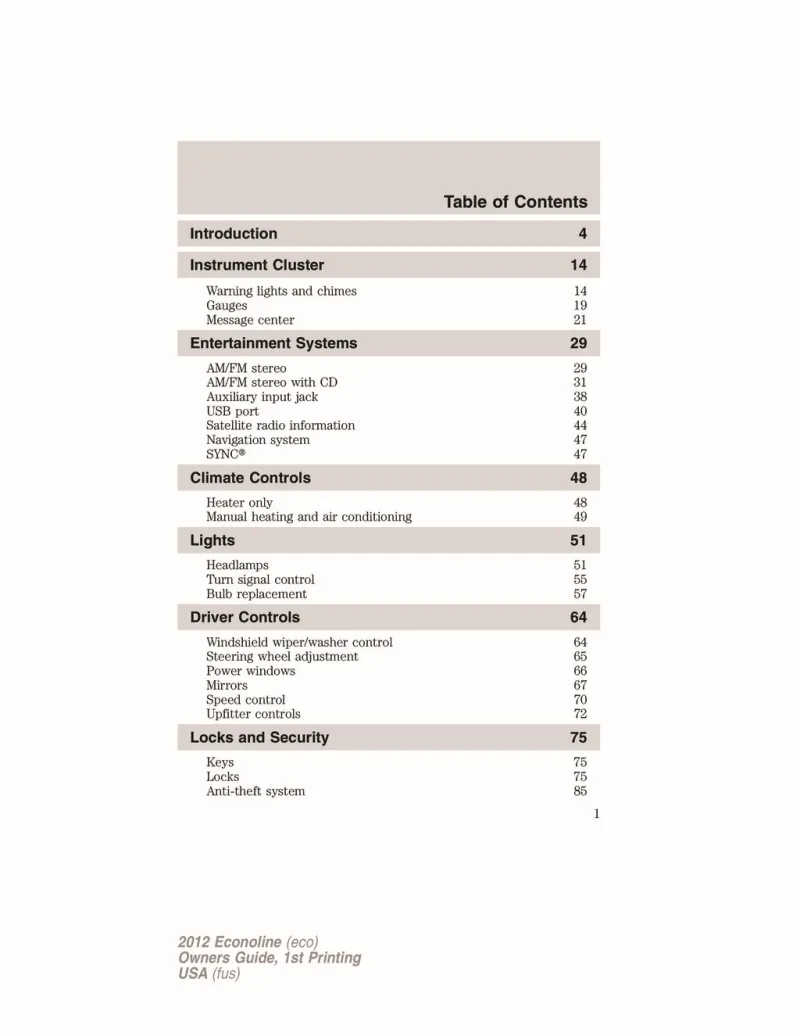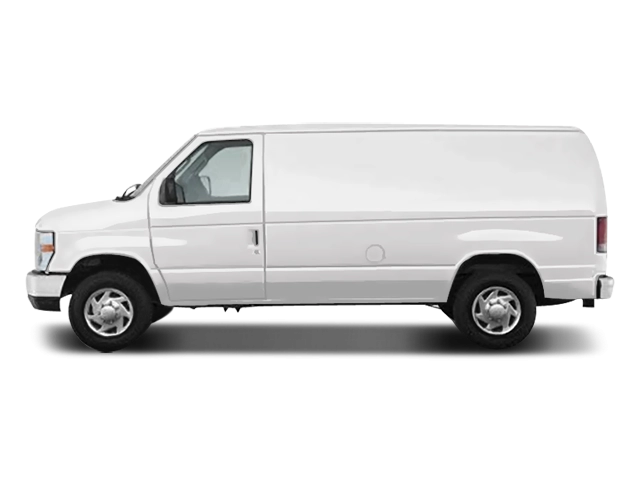2012 Ford E150 Owner's Manual

Table of Contents
2012 Ford E150 Overview
Introduction
The 2012 Ford E150 is a steadfast member of the Ford E-Series, known for its robust design and versatile capabilities. Popular in both commercial and personal use, the E150 brings reliable performance and ample space for passengers or cargo. With a legacy of excellence, this full-size van is the perfect choice for those seeking a durable and dependable vehicle that can handle various tasks with ease.
Powertrains
Under the hood, the 2012 E150 comes equipped with a powerful 4.6-liter V8 engine that produces 305 horsepower and 420 lb-ft of torque. This capable engine is paired with a 4-speed automatic transmission, ensuring smooth shifts and strong acceleration. The E150 is designed for efficient towing with a maximum towing capacity of up to 6,000 pounds, making it ideal for transporting trailers, boats, or cargo. An alternative powertrain option includes a robust 5.4-liter V8 engine, generating even more power for those requiring extra performance.
Trims
The 2012 E150 is offered in multiple trims, allowing buyers to select the configuration that best meets their needs. The base trim comes with practical features like vinyl seating, air conditioning, and a basic audio system. Upgrading to mid-tier trims introduces conveniences such as power windows, enhanced audio systems, and upgraded seating configurations. Fleet options are also available, tailoring the E150 for commercial use with features designed for durability and functionality.
Features
This model features a spacious interior designed for comfort and utility. The front cabin includes easy-to-reach controls and a user-friendly dashboard layout. Safety features are important, with options for antilock brakes, stability control, and multiple airbags ensuring peace of mind while on the road. Additionally, the E150 offers cargo management systems for easy organization of tools and equipment.
Owners Manual
The 2012 Ford E150 comes with a comprehensive owner's manual that details operation, maintenance schedules, and troubleshooting tips, ensuring that owners can maximize their vehicle's performance and longevity. This manual serves as an essential resource for understanding the van’s features, recommended service intervals, and safety guidelines, allowing owners to maintain their E150 with confidence.
User manual download
The Ford E150 owner manual for the 2012 model year is to be found in PDF downloadable format on this page. The owner manual for the model year 2012 is free and in English, but the repair manuals are usually not easy to get and may cost more.
Manual Questions
Fill the form below and someone will help you!

